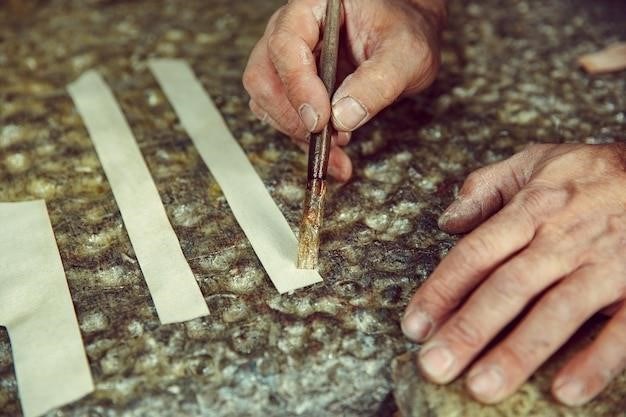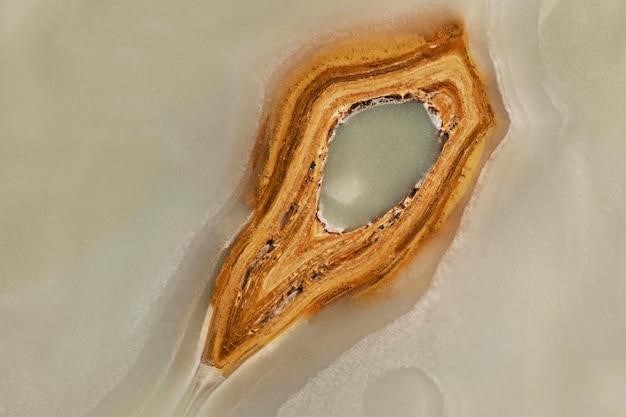A History of Agate Stripping Guides
Agate stripping guides‚ featured in Kosmic Rods as early as the 1870s‚ were showcased in Dr․ George Parker Holden’s “Idyl of Split Bamboo․” Their popularity waned‚ then experienced a revival by modern makers‚ demonstrating enduring appeal in fly rod construction․
Early Adoption and the Idyl of Split Bamboo
The earliest documented use of agate stripping guides dates back to the 1870s‚ with Kosmic Rods incorporating them into their designs․ This early adoption highlights the material’s inherent appeal for its beauty and perceived durability․ The influential book‚ “Idyl of Split Bamboo‚” by Dr․ George Parker Holden‚ further cemented agate’s place in fly fishing history․ Holden’s detailed illustrations and descriptions showcased the elegance and craftsmanship associated with these guides‚ influencing generations of rod makers and reinforcing their position as a premium component․ The book’s enduring legacy helped establish agate as a desirable‚ though perhaps somewhat impractical‚ material for high-end rods․ The inherent beauty of the natural stone‚ with its varied colors and patterns‚ made it a favorite choice for those seeking both function and aesthetic excellence in their custom-built rods; This early period saw agate’s integration into the world of split-bamboo rod making‚ establishing a tradition that continues to this day․
The Decline and Subsequent Revival of Agate Guides
Despite their early popularity‚ agate stripping guides eventually faced a decline in usage․ The rise of more readily available and arguably more durable materials‚ such as those used in Mildrum-type strippers‚ contributed significantly to this shift․ These alternatives offered advantages in terms of strength and resistance to wear and tear‚ particularly in the demanding conditions of fly fishing․ The rationales behind this change often centered on practicality and longevity․ However‚ the inherent beauty and unique character of agate guides ensured that they never completely disappeared from the scene․ A resurgence of interest in handcrafted and traditional techniques in recent years has led to a notable revival․ Modern rod makers‚ appreciating both the aesthetic appeal and the historical significance of agate‚ have embraced its use again․ This renewed popularity reflects a broader trend toward valuing craftsmanship and individuality in fly rod construction‚ with agate guides representing a premium and highly sought-after element․

Modern Agate Stripping Guide Production
Contemporary production often involves meticulous handcrafting․ Makers carefully select and bezel natural agate stones‚ setting them into frames‚ often of nickel silver‚ creating unique‚ high-quality guides․
Handcrafted Techniques and Materials
The creation of handcrafted agate stripping guides is a testament to skilled artisanship and attention to detail․ The process begins with the careful selection of high-quality agate stones‚ each possessing unique coloration and banding patterns․ These natural stones are then meticulously shaped and polished to achieve the desired dimensions and smoothness․ The next crucial step involves the creation of the guide’s frame‚ typically fashioned from durable nickel silver‚ though other metals may also be employed․ This frame is precisely engineered to securely hold the agate insert․ Experienced craftspeople utilize specialized tools to bezel the agate‚ carefully shaping and securing the precious stone within the frame․ The process demands precision to ensure a perfect fit and prevent any damage to the delicate agate․ After the agate is firmly set‚ the guide undergoes a final polishing to achieve a flawless finish‚ enhancing both its aesthetic appeal and its functionality․ The entire process requires a blend of artistry and technical expertise‚ resulting in a truly exceptional component for high-end fly rods․ This meticulous approach ensures the creation of durable‚ visually stunning‚ and highly functional guides․
Manufacturers and Suppliers of Agate Guides
Several manufacturers and suppliers cater to the demand for high-quality agate stripping guides․ Individual artisans‚ often working from small workshops‚ produce meticulously handcrafted guides‚ each a unique piece showcasing the natural beauty of the agate․ These makers frequently utilize traditional techniques passed down through generations‚ ensuring the preservation of time-honored craftsmanship․ Larger companies‚ often based in Europe or Asia‚ offer mass-produced guides‚ providing a more affordable option for rod builders․ These guides may lack the individual character of handcrafted pieces but still offer reliable performance․ Online retailers serve as a convenient marketplace for both handcrafted and mass-produced guides‚ connecting rod builders with a variety of suppliers worldwide․ Many suppliers offer a range of sizes‚ colors‚ and frame styles to accommodate diverse aesthetic preferences and rod designs․ When selecting a supplier‚ it is crucial to consider factors such as the quality of materials‚ the craftsmanship of the guides‚ and the reputation of the manufacturer or retailer to ensure receiving guides that meet individual expectations and project needs․

Types and Styles of Agate Stripping Guides
Agate stripping guides offer diverse styles‚ including variations in size (10mm and 12mm are common)‚ frame designs (four-legged‚ three-legged‚ V-shaped‚ or snake)‚ and the natural variations in agate color and patterns․
Size Variations and Frame Designs
The dimensions of agate stripping guides significantly influence their application and aesthetic appeal․ Common sizes include 10mm and 12mm outer diameters‚ catering to different rod builds and line weights․ Larger guides are often preferred for heavier lines‚ facilitating smoother casting․ Smaller guides might be chosen for lighter lines or rods where a more delicate appearance is desired․ The choice of size should align with the overall design and intended use of the fishing rod․
Frame designs also contribute to both functionality and visual style․ Traditional four-legged frames offer stability and strength‚ while three-legged designs provide a more streamlined profile․ Some makers offer unique variations‚ such as V-shaped or snake-like frames‚ adding a touch of custom artistry․ The frame material‚ frequently nickel silver‚ can be finished in silver or black‚ with flat or concave foot bases‚ further enhancing the customizability of the guide․ The frame’s design and finish should complement the agate stone and the rod’s overall aesthetic․
Color and Pattern Options in Natural Agate
Natural agate stones exhibit a captivating spectrum of colors and patterns‚ making each stripping guide a unique work of art․ The inherent variations in coloration and banding within the agate contribute to the individuality of each piece․ Shades range from subtle pastels to vibrant hues‚ encompassing whites‚ pinks‚ reds‚ oranges‚ yellows‚ greens‚ blues‚ and browns․ Intense colors with striking banding are particularly sought after by rod builders․ The beauty of natural agate lies in its unpredictable nature; no two stones are precisely alike․
These natural variations translate into a wide array of aesthetic possibilities for fly rods․ Rod builders can select agate stones to match specific rod designs or personal preferences‚ creating truly custom pieces․ Whether aiming for a subtle‚ understated elegance or a bold‚ eye-catching statement‚ the diversity of natural agate offers unparalleled potential for personalization․ The unique character of each stone elevates the rod beyond mere functionality‚ transforming it into a bespoke work of art․
Durability and Longevity of Agate Stripping Guides
While aesthetically pleasing‚ agate’s relative softness compared to ceramic raises durability concerns․ Proper care and maintenance are crucial for extending the lifespan of agate stripping guides‚ ensuring their continued performance․
Comparison with Other Guide Materials
Agate stripping guides‚ while prized for their beauty‚ face competition from materials offering superior durability․ Modern ceramic guides‚ for instance‚ boast exceptional hardness and resistance to abrasion‚ significantly outlasting agate in high-use scenarios․ Hardened steel guides provide another robust alternative‚ particularly valuable for saltwater fishing where corrosion resistance is paramount․ While these materials may lack the unique aesthetic appeal of agate‚ their longevity often outweighs the visual preference for many anglers․ The choice often hinges on a balance between aesthetics and practical considerations; the stunning visual character of agate might be prioritized for a showpiece rod‚ whereas a workhorse rod intended for frequent use would benefit from the resilience of ceramic or steel․
The debate extends beyond simple durability․ Some anglers value the smooth‚ low-friction surface of certain hard-anodized aluminum guides‚ which offer excellent line glide and reduce wear on the line itself․ Each material presents a unique set of advantages and disadvantages‚ prompting careful consideration of intended use and personal preferences when selecting guides for a custom rod․
Maintenance and Care of Agate Guides
Proper care ensures the longevity and beauty of agate stripping guides․ Regular cleaning is crucial; after each use‚ gently wipe the guides with a soft‚ damp cloth to remove any accumulated dirt‚ salt residue (especially important for saltwater fishing)‚ or other debris․ Avoid harsh chemicals or abrasive cleaners that could scratch the delicate agate surface․ For stubborn grime‚ a mild soap solution and a soft brush can be effective‚ followed by thorough rinsing and drying․ Periodic inspection for any signs of damage‚ such as cracks or chips‚ is recommended․ Storage should be in a dry‚ protective case to prevent accidental damage or exposure to extreme temperatures․ While agate is relatively durable‚ avoiding impacts and rough handling is advisable to preserve its integrity; With careful attention‚ these exquisite guides can maintain their beauty and functionality for many years‚ adding a touch of classic elegance to any fly rod․
Leave a Reply
You must be logged in to post a comment.